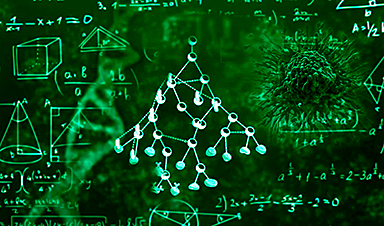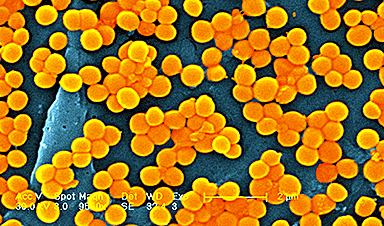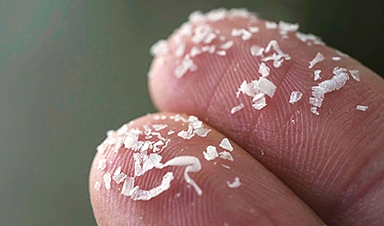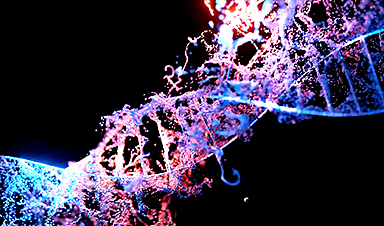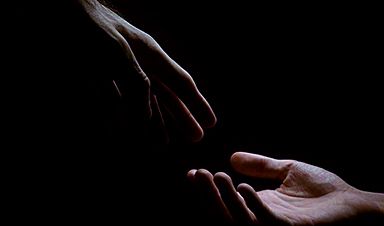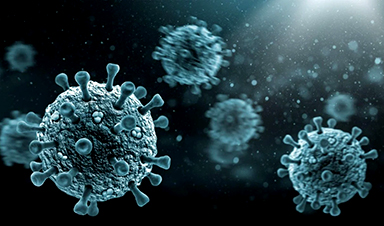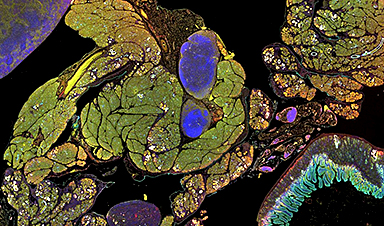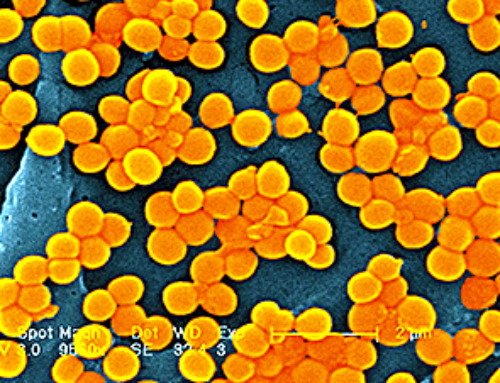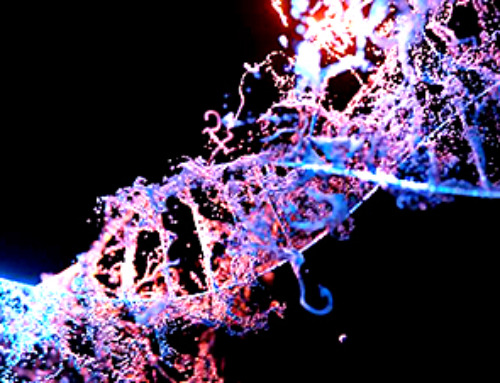A new study argues for a revised clonal evolution model of cancer, incorporating genetic and non-genetic factors to improve understanding and treatment.
Like all living organisms, cancer cells are driven by the fundamental need to grow, survive, and reproduce. Although cancer’s evolutionary underpinnings have been recognized since the 1950s, clinicians have been slow to apply the lessons of evolution to the fight against this deadly disease, which claimed 9.7 million lives worldwide in 2022 and remains the second-leading cause of death.
In a new study published in the journal Nature Reviews Cancer, Arizona State University researcher Carlo Maley and Lucie Laplane from the University of Paris Pantheon-Sorbonne review the prevailing theory of cancer evolution. The authors identify both practical and theoretical limitations of the clonal model of cancer evolution and propose revisions that could improve the model’s accuracy and relevance.
The study suggests that the model could be improved by acknowledging that cancer cells inherit not only genetic mutations but also other traits that allow them to rapidly adapt to their environment — even without genetic alterations. Cancer cells are highly responsive to their surrounding environment, which can promote or suppress their growth. Further, cancer evolution often follows complex dynamics, leading to tangled and unpredictable growth patterns.

Rethinking the Clonal Evolution Model
Cancer biologists have traditionally defined a “clone” as a group of cells descending from a single ancestor cell and sharing the same genetic makeup. But cancer cells mutate so fast that no two cells have the same genetic makeup. The study proposes replacing the concept of a clone with a focus on the cell genealogies that record the history and define the structure of the cells in a tumor.
The value of an effective model lies in its ability to explain how and why cancers evolve and respond to therapy. By refining the clonal evolution model, the study paves the way for more effective cancer therapies that consider the full complexity of cancer cell evolution.

“Evolution is such a powerful idea that when we apply it to the cells in our bodies, it explains how we get cancer and why it is so hard to cure. But, like everything in the real world, it’s complicated,” Maley says. “We set out to address the complications that people have pointed out and show how they can be integrated into our theory of how cancer works.”
Maley is a researcher in the Biodesign Center for Biocomputing, Security and Society, director of the Arizona Cancer Evolution Center, and a professor at ASU’s School of Life Sciences.
His collaborator, Lucie Leplane, visited ASU for the research project, thanks to the generous support of the Center for Biology and Society and a grant from the McDonnell Foundation.
Expanding Evolutionary Cancer Theory
The clonal evolution theory of cancer suggests that cancer begins from a single cell that undergoes mutations, enabling it to grow and divide faster than normal cells. As this cell divides, some of its offspring may gain additional mutations that provide even greater advantages in survival and growth. Over time, this process leads to a population of cancer cells that are very diverse but driven by those that are most fit for survival and reproduction in their environment. This theory helps explain why cancers can be so challenging to treat — they continuously evolve, making them adaptable to various therapies and environments.
To address these issues, the researchers explore the limits of the current evolutionary cancer theory. A key challenge is expanding this theory to encompass all the ways cancer evolves, including the inheritance of more than just genes when cells divide and genetic material exchange among cells, as well as developing better methods to identify and track cancer cell variations.
Traditionally, it has been assumed that the DNA of cancer cells largely determines their behavior and progression. This includes how they grow, spread, and respond to treatments. The study challenges this view, highlighting other factors such as the influence of a cell’s surrounding environment and epigenetic changes — chemical modifications that alter gene expression without changing the genetic sequence.
Another assumption is that the development of cancer can be traced like a tree, from one main ancestor cell branching out into all the cancer cells found in a tumor. That model implies a neat, predictable pattern of cancer growth. However, the study suggests this is not always the case. Cancer cells can merge (through cell fusion) or acquire traits from other cells. This could make the growth pattern of cancers more complex, resembling more of a network with multiple influences and paths.
Further, while clonal evolution was initially considered a continuous, gradual process, it has been shown to occur during stasis, gradual change, or sudden, punctuated bursts.
Conclusion and Treatment Implications
The clonal evolution model has already brought about a significant shift in how we view cancer, highlighting the disease’s profoundly dynamic nature. This shift in perspective has helped discredit the search for a single “magic bullet” treatment and prompted changes in both research and treatment approaches.
Although the clinical impact of evolutionary theory has been limited so far, a range of evolutionary strategies for treatment has shown encouraging results, such as adaptive therapy, which can lead to dramatic improvements in time progression and overall survival.
Understanding the multifaceted nature of cancer evolution is critical for developing more effective treatments. The study suggests that targeting not only genetic mutations but also epigenetic changes and interactions with the surrounding cell environment could improve treatment outcomes.
By refining the clonal evolution model, the study paves the way for more effective cancer therapies that consider the full complexity of cancer cell evolution.
Reference: “The evolutionary theory of cancer: challenges and potential solutions” by Lucie Laplane, and Carlo C. Maley, 10 September 2024, Nature Reviews Cancer.
DOI: 10.1038/s41568-024-00734-2
News
How the FDA opens the door to risky chemicals in America’s food supply
Lining the shelves of American supermarkets are food products with chemicals linked to health concerns. To a great extent, the FDA allows food companies to determine for themselves whether their ingredients and additives are [...]
Superbug crisis could get worse, killing nearly 40 million people by 2050
The number of lives lost around the world due to infections that are resistant to the medications intended to treat them could increase nearly 70% by 2050, a new study projects, further showing the [...]
How Can Nanomaterials Be Programmed for Different Applications?
Nanomaterials are no longer just small—they are becoming smart. Across fields like medicine, electronics, energy, and materials science, researchers are now programming nanomaterials to behave in intentional, responsive ways. These advanced materials are designed [...]
Microplastics Are Invading Our Arteries, and It Could Be Increasing Your Risk of Stroke
Higher levels of micronanoplastics were found in carotid artery plaque, especially in people with stroke symptoms, suggesting a potential new risk factor. People with plaque buildup in the arteries of their neck have been [...]
Gene-editing therapy shows early success in fighting advanced gastrointestinal cancers
Researchers at the University of Minnesota have completed a first-in-human clinical trial testing a CRISPR/Cas9 gene-editing technique to help the immune system fight advanced gastrointestinal (GI) cancers. The results, recently published in The Lancet Oncology, show encouraging [...]
Engineered extracellular vesicles facilitate delivery of advanced medicines
Graphic abstract of the development of VEDIC and VFIC systems for high efficiency intracellular protein delivery in vitro and in vivo. Credit: Nature Communications (2025). DOI: 10.1038/s41467-025-59377-y. https://www.nature.com/articles/s41467-025-59377-y Researchers at Karolinska Institutet have developed a technique [...]
Brain-computer interface allows paralyzed users to customize their sense of touch
University of Pittsburgh School of Medicine scientists are one step closer to developing a brain-computer interface, or BCI, that allows people with tetraplegia to restore their lost sense of touch. While exploring a digitally [...]
Scientists Flip a Gut Virus “Kill Switch” – Expose a Hidden Threat in Antibiotic Treatment
Scientists have long known that bacteriophages, viruses that infect bacteria, live in our gut, but exactly what they do has remained elusive. Researchers developed a clever mouse model that can temporarily eliminate these phages [...]
Enhanced Antibacterial Polylactic Acid-Curcumin Nanofibers for Wound Dressing
Background Wound healing is a complex physiological process that can be compromised by infection and impaired tissue regeneration. Conventional dressings, typically made from natural fibers such as cotton or linen, offer limited functionality. Nanofiber [...]
Global Nanomaterial Regulation: A Country-by-Country Comparison
Nanomaterials are materials with at least one dimension smaller than 100 nanometres (about 100,000 times thinner than a human hair). Because of their tiny size, they have unique properties that can be useful in [...]
Pandemic Potential: Scientists Discover 3 Hotspots of Deadly Emerging Disease in the US
Virginia Tech researchers discovered six new rodent carriers of hantavirus and identified U.S. hotspots, highlighting the virus’s adaptability and the impact of climate and ecology on its spread. Hantavirus recently drew public attention following reports [...]
Studies detail high rates of long COVID among healthcare, dental workers
Researchers have estimated approximately 8% of Americas have ever experienced long COVID, or lasting symptoms, following an acute COVID-19 infection. Now two recent international studies suggest that the percentage is much higher among healthcare workers [...]
Melting Arctic Ice May Unleash Ancient Deadly Diseases, Scientists Warn
Melting Arctic ice increases human and animal interactions, raising the risk of infectious disease spread. Researchers urge early intervention and surveillance. Climate change is opening new pathways for the spread of infectious diseases such [...]
Scientists May Have Found a Secret Weapon To Stop Pancreatic Cancer Before It Starts
Researchers at Cold Spring Harbor Laboratory have found that blocking the FGFR2 and EGFR genes can stop early-stage pancreatic cancer from progressing, offering a promising path toward prevention. Pancreatic cancer is expected to become [...]
Breakthrough Drug Restores Vision: Researchers Successfully Reverse Retinal Damage
Blocking the PROX1 protein allowed KAIST researchers to regenerate damaged retinas and restore vision in mice. Vision is one of the most important human senses, yet more than 300 million people around the world are at [...]
Differentiating cancerous and healthy cells through motion analysis
Researchers from Tokyo Metropolitan University have found that the motion of unlabeled cells can be used to tell whether they are cancerous or healthy. They observed malignant fibrosarcoma [...]
